When your part design calls for tight bends, clean edges, and consistent accuracy, sheet metal bending can be a challenge. Poor technique often leads to cracks, springbacks, or visible tooling marks. But with the correct method, tool choice, and process knowledge, you can reduce scrap, save costs, and get better bend results. Let’s break it down clearly from the ground up.
Sheet metal can be bent using several methods, including press brake forming, V-bending, and air bending. Each method is suited to different materials and thicknesses. Tools like punches and dies help shape the metal into precise angles and forms. With proper setup and handling, bends will be clean, accurate, and damage-free.
Good bends start with smart design choices and simple planning. Let’s look at what tools and steps make the biggest difference.
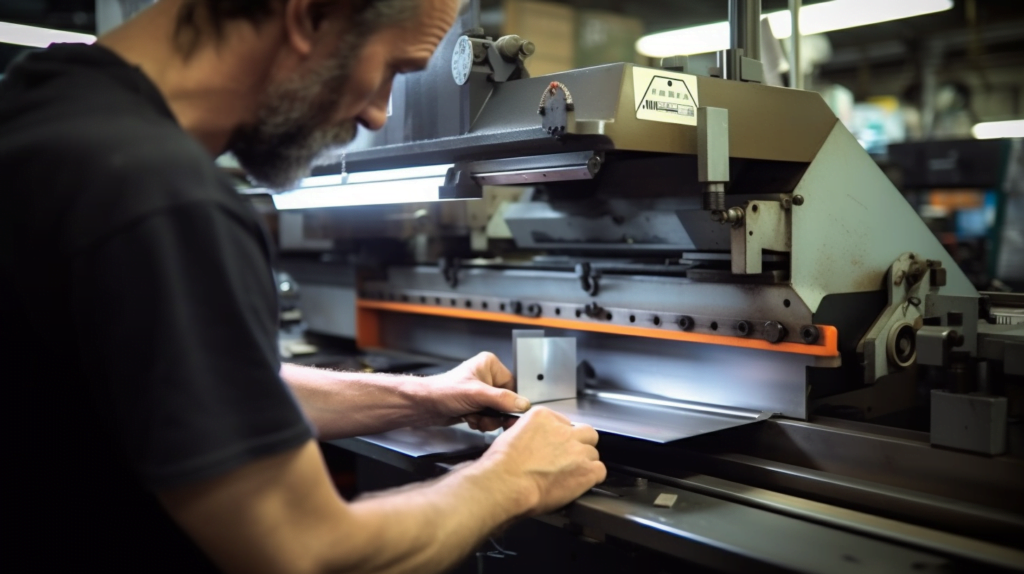
What Is Sheet Metal Bending?
Sheet metal bending is a process that shapes flat metal into angles or curves using pressure. It helps create brackets, enclosures, frames, and many structural parts. The most common bending method is press brake forming. Others include hand bending, roll bending, and rotary draw bending.
This process forms parts without removing material. It changes the metal’s shape by applying force. The bend angle and radius depend on the punch and die, material type, and how deep the punch presses the sheet.
Engineers and buyers need to know how bending affects tolerances, dimensions, and material strength. Below, we’ll explain the key types of bending methods used in production.
Bending Methods and Techniques
There are various methods for bending sheet metal, depending on the desired shape, material, and level of precision required. Each technique employs a distinct setup and applies pressure in a specific manner. Below are the primary bending methods used in workshops and factories.
Air Bending
Air bending uses a punch to press the metal partway into a V-shaped die. The punch does not touch the bottom of the die. This creates a bend using three contact points: the punch and both sides of the die.
It allows flexibility in bend angles and works well with different materials and thicknesses. Less force is needed, which extends tool life. But springback is more common, so bend angles can be harder to control.
Bottoming
Bottoming, also called bottom bending, forces the metal firmly into the bottom of the die. The punch and die shapes closely match the desired bend angle. This reduces spring back and yields more precise results.
It requires more force than air bending but offers better accuracy. However, the tools wear out faster. Bottoming is a good choice when high precision and repeatability are needed.
Coining
Coining applies even more pressure than bottoming. The punch presses deep into the metal, shaping it with great force. This thins the metal slightly and locks in the angle.
Springback is nearly zero, and the bend angle is very exact. This method works well for small, detailed parts. The downside is increased energy consumption and accelerated tool wear.
Roll Bending
Roll bending uses rollers to curve metal into large radii. The metal passes through a set of rollers that gradually bend it as it moves forward.
This method is ideal for creating cylindrical or curved parts, such as pipes or tanks. It works well with long sheets and creates smooth, consistent bends. It’s not used for sharp angles.
Wipe Bending
Wipe bending bends the edge of a sheet around a die using a pressure pad and a wiping punch. The sheet stays flat while one edge is bent down.
It’s useful for flanges and slight edge bends. However, the process can cause marks and is limited to certain angles. Tool setup must be exact to avoid warping.
Rotary Bending
Rotary bending uses a rotating die to form the bend. The die rolls with the metal as it bends, which reduces surface damage.
It’s ideal for parts that require a clean, finished appearance, such as painted or coated surfaces. It also lowers friction and allows sharper bends without cracking.
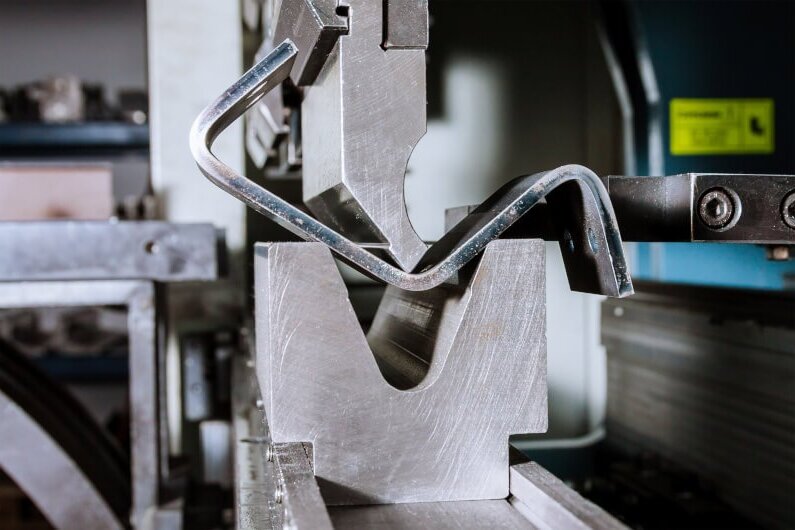
How to Bend Sheet Metal: Step-by-Step Bending Process
The bending process needs more than just the right machine. It requires careful setup, secure handling, and accurate checks. Here’s how it works in a typical shop environment.
Step 1:Set Up the Machine
Start by selecting the right punch and die based on the material thickness and bend angle. Inspect the tooling for signs of wear or damage. Install them into the press brake or bending machine.
Adjust the machine settings, including stroke depth, back gauge position, and bend angle, as needed. Ensure the machine is clean and all bolts are securely tightened.
Step 2:Securing the Sheet
Place the sheet metal flat against the back gauge and support it evenly. Keep the surface clean and free of oil or debris. Use clamps or guides if needed to prevent shifting.
Step 3:Performing the Bend
Activate the machine slowly for the first bend. Watch how the sheet reacts as the punch moves down. For air bending or coining, adjust the force to get the right angle.
If you’re using a manual press, apply pressure smoothly and consistently. Do not force the metal too quickly. Bending too quickly can cause the material to crack or warp.
Step 4:Checking for Accuracy
After the bend, remove the part and measure the angle with a protractor or angle gauge. Check the bend radius and overall shape. Compare it to the drawing or CAD model.
If the angle is off, adjust the depth or tooling and try again. It may take a few test pieces to get perfect results. Once the settings are correct, repeat the process for the remaining batches.
Tools and Equipment Used
The right tool makes bending easier, faster, and more consistent. Each machine has its strengths depending on part size, volume, and bend type. Here’s a quick overview of the main tools used in sheet metal bending.
Manual Bending Tools
Manual tools, such as hand seamers, bar folders, and bench brakes, are used for small jobs or thin materials. These tools are simple and don’t need electricity or air pressure.
They’re helpful for repairs, quick prototypes, or small runs. But they require more skill and time. Accuracy depends on the operator’s technique.
Press Brakes
Press brakes are the most common machines for bending sheet metal. They use a punch and die to apply force and create bends. Press brakes can be hydraulic, mechanical, or electric.
They work well for a wide range of materials and thicknesses. CNC press brakes allow precise control and repeatable results. These machines are ideal for medium to high-volume production.
Folding Machines
Folding machines clamp the sheet and fold the edge upward or downward using a rotating beam. They are ideal for bending large panels or thin sheets with minimal handling.
This method creates clean edges and helps reduce surface marks. It’s often used in ductwork and panel fabrication.
Roll Benders
Roll benders, or plate rolls, are designed to bend large sheets into curves. They use a set of rollers to apply pressure gradually as the metal passes through.
These machines are ideal for making tubes, cones, and curved profiles. They are not used for sharp or tight bends.
V-Blocks and Dies
V-blocks and dies are key parts of press brake tooling. The punch pushes the sheet into the die, shaping the metal to the required angle.
Different die shapes are used depending on the bend angle and part design. Choosing the right punch and die is critical for consistent results and preventing defects.
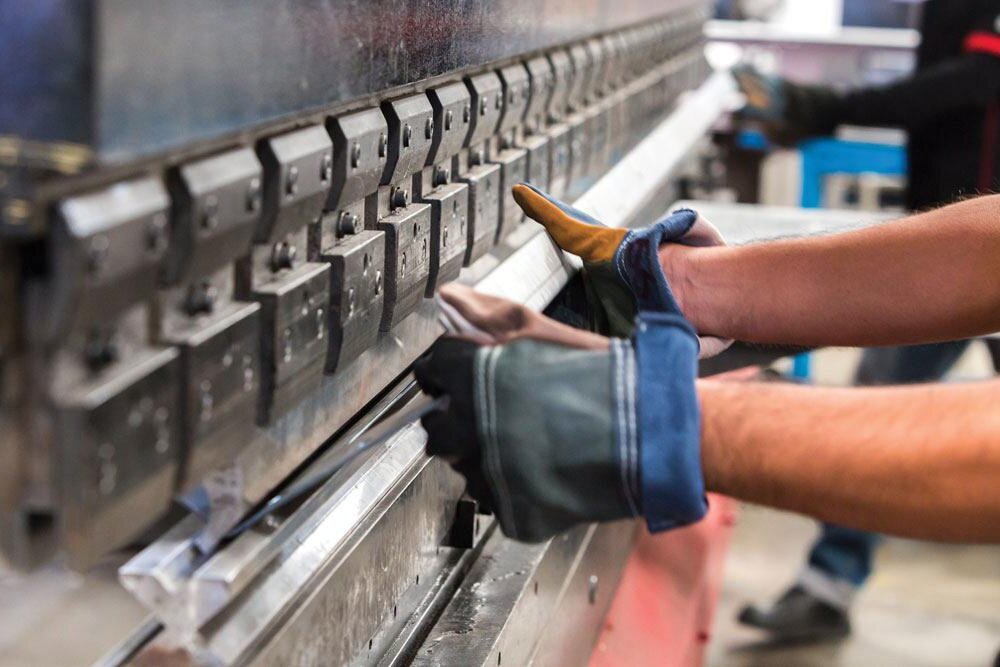
Design Principles for Successful Bends
Good bending starts with good design. If your part isn’t designed for how metal behaves during bending, you’ll face problems like cracking, misalignment, or wasted material. These basics help improve part quality and reduce trial and error.
Minimum Bend Radius
The minimum bend radius is the smallest radius you can use without cracking the material. It depends on the material type and thickness.
For soft materials like aluminum, the minimum radius can be close to the thickness. For harder ones like stainless steel, the radius needs to be larger. Always check material guidelines before setting your bend radius.
Bend Allowance and Bend Deduction
When you bend metal, the outer layer stretches, and the inner layer compresses. This changes the final length of the part.
Bend allowance is the amount you add to account for this stretch. Bend deduction is how much you subtract to get the flat length. Both are used when creating accurate flat patterns before bending.
K-Factor and Its Importance
The K-factor helps calculate bend allowance. It’s the ratio between the neutral axis (the area that doesn’t stretch or compress) and the material thickness.
A common K-factor is around 0.3 to 0.5, but it varies by material and bend method. It’s essential for creating correct flat patterns in CAD or CAM systems.
Avoiding Cracking and Warping
To reduce cracking, use an extensive enough bend radius and avoid bending with the grain. Select the appropriate tooling and apply smooth, even pressure.
To avoid warping, support thin sheets during bending. Use sharp, clean tooling to reduce drag and deformation. Proper setup and sound design choices prevent the most common bending issues.
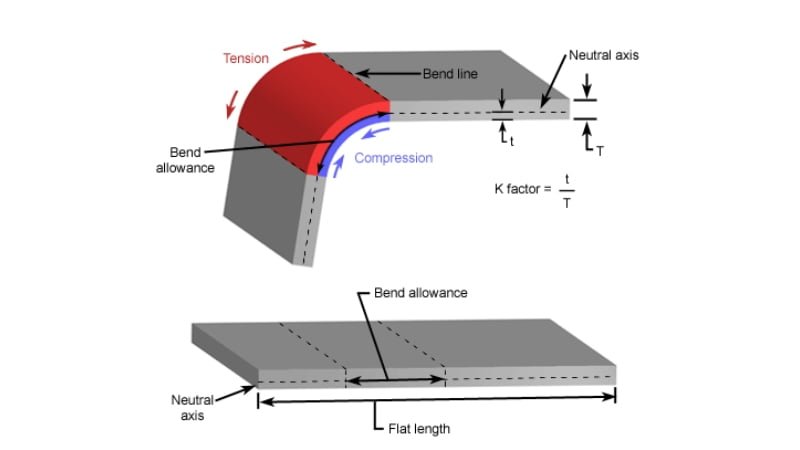
Bending Tolerances and Accuracy
Tolerances define how close the final part is to its intended shape. In bending, tight tolerances mean less rework and better fit during assembly. To hit the correct numbers, you need to control every part of the process.
Standard Tolerances in Bending
Most shops use a standard bend angle tolerance of ±1 degree. For linear dimensions, the tolerance is usually ±0.5 mm or ±0.020 inches. These numbers may vary depending on the material and part size.
Tighter tolerances are possible with CNC press brakes, precision tooling, and consistent setup. Always define required tolerances in the design to avoid confusion.
Factors That Affect Precision
Several things affect bend accuracy. These include material properties, machine settings, tool wear, and part handling.
Material hardness and grain direction impact spring back. Tool alignment and machine calibration also play a role. Even operator skill affects how consistent each part turns out.
How to Minimize Springback?
Springback happens when metal tries to return to its original shape after bending. To reduce it, use bottoming or coining instead of air bending.
Choose the right bend radius and punch angle. Softer materials have less spring back. More challenging ones, like stainless steel, require overbending to compensate.
Testing with sample bends and adjusting angles based on results helps fine-tune accuracy before full production.
Conclusion
Bending sheet metal involves more than just pressing metal into shape. You need the correct method, proper tools, and a clear understanding of material behavior. Factors such as bend radius, grain direction, spring back, and tool setup all impact the result. With careful planning and the proper steps, you can produce accurate, clean, and repeatable bends for any project.
Need help with custom-bent metal parts? Reach out to us with your drawings or specifications. Our team is ready to assist with fast quotes and expert support.
Hey, I'm Kevin Lee

For the past 10 years, I’ve been immersed in various forms of sheet metal fabrication, sharing cool insights here from my experiences across diverse workshops.
Get in touch

Kevin Lee
I have over ten years of professional experience in sheet metal fabrication, specializing in laser cutting, bending, welding, and surface treatment techniques. As the Technical Director at Shengen, I am committed to solving complex manufacturing challenges and driving innovation and quality in each project.

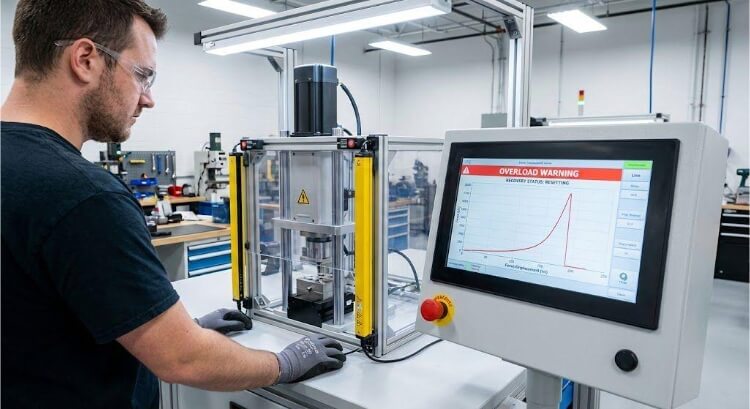



One Response